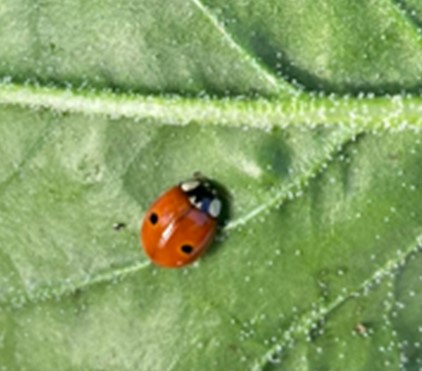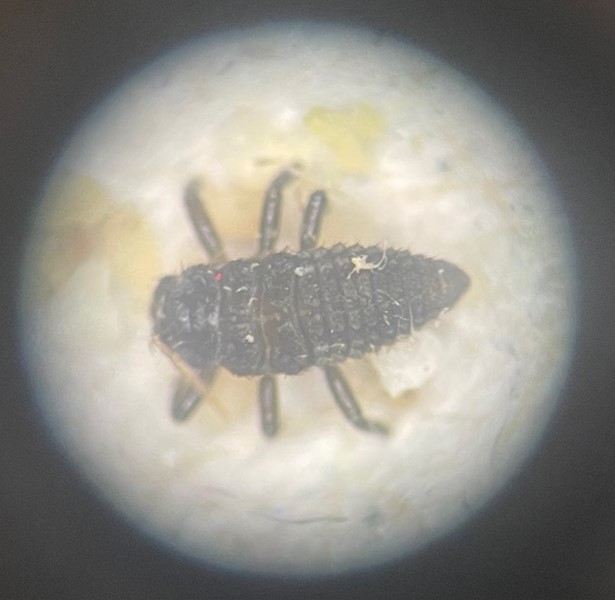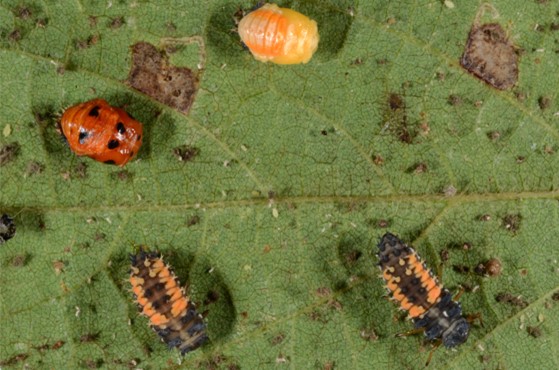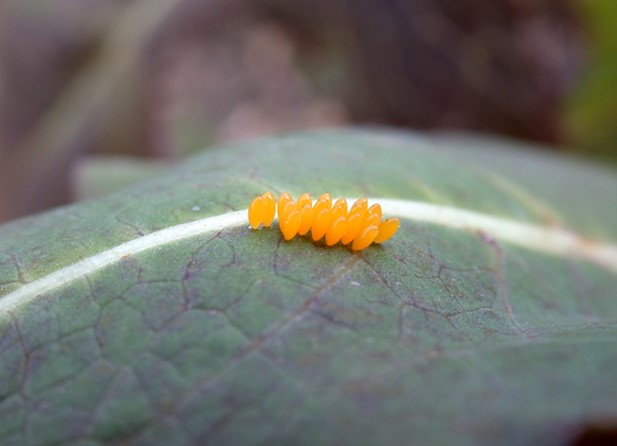The Two-spotted lady beetle, Adalia bipunctata, is a common insect predator, meaning it feeds on other, smaller bugs. Native to North America and Europe, the Two-spotted lady beetle is distinguished from other lady beetles by its oblong shape and two large black spots on either of its back, as well as its large white spots near its head (Figure 1). Beetles go through complete metamorphosis, transitioning from tiny orange eggs (1mm in diameter) to larvae (up to 6 mm; Figures. 2-3), pupa (Figure 3) and then adults (3-4mm). A.bipunctata will lay eggs in clusters (Figure 4), often on the underside of leaves, of numerous plant species, as long as food is nearby. Larvae are scaled and spikey, black and brown in color, often referred to as alligator-looking (Figure 2). They mature into adults in less than a month. The adults live for approximately 1 to 2 years. A. bipunctata are commonly found in wooded habitats in temperate regions, where they overwinter as adults. In the warmer months, they can be found near most kinds of vegetation. Common locations to find lady beetles include meadows, forests, gardens, and fields.
The Two-spotted lady beetle is an intrinsically important insect within an ecosystem: one of their key characteristics is their carnivorous nature at both the larval and adult stages. When compared to other common insects used for pest management, like a parasitoid wasp, which is only capable of predating on pests as an adult, A. bipunctata consumes pests for its entire life cycle. These insects consume a wide range of small, soft-bodied pests such as aphids, psyllids, scale insects, or mealybugs. For this reason, lady beetles, in general, are used widely as biological control agents for pest management in specialty crop systems.
When it comes to picking which predator (or lady beetle in particular) to deploy for biological control, the Two-spotted lady beetle is not only an effective option but is Native to Indiana and, therefore, fits perfectly into the existing ecosystem. Compare this to the Asian lady beetle, Harmonia axyridis (Figure 3), which was introduced to do the same task as the Two-spotted lady beetle. However, due to its non-native nature, the Asian lady beetle has quickly overrun many native populations, including the Two-spotted.
To tip the scales back in favor of native species, the use of A. bipunctata is recommended over other species, such as the Asian lady beetle. When purchasing these insects, it is important that they are sustainably sourced, meaning they are reared in a controlled environment for IPM use rather than harvested from the wild population. The best way to recognize this is to note if adults are being sold or if the insects are being sold as larvae or eggs. If it is the latter, then it is likely the beetles are sustainably sourced.



